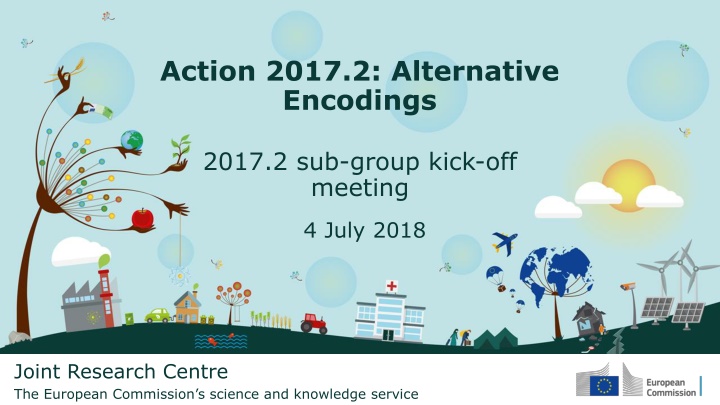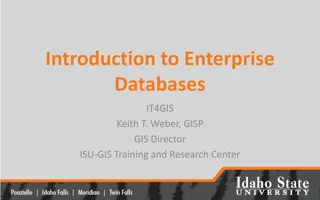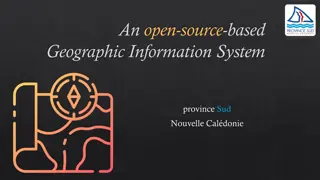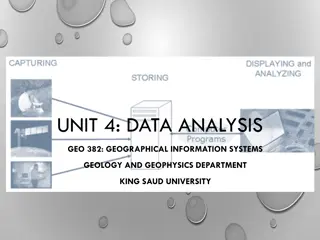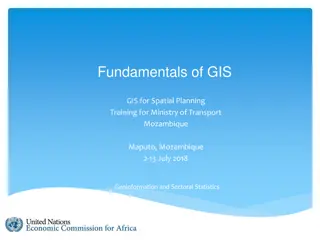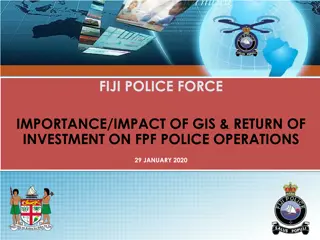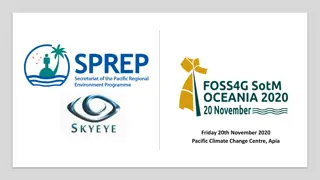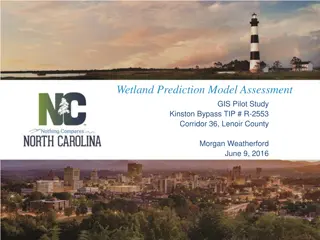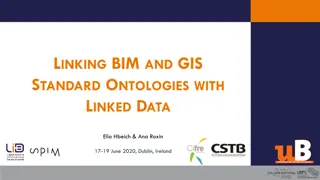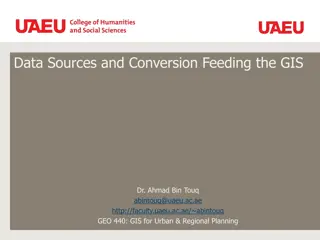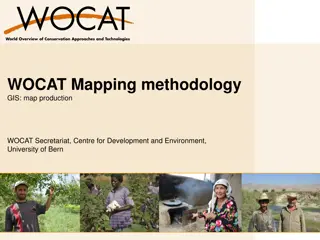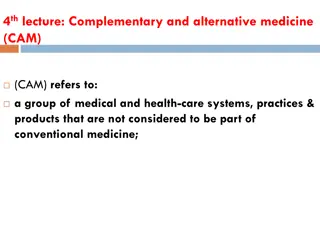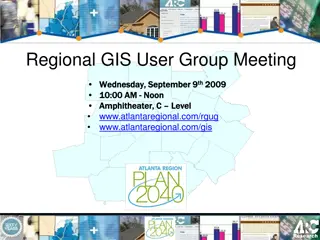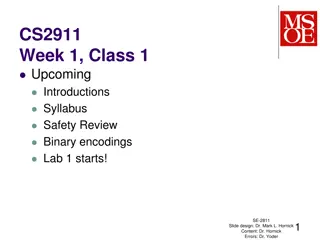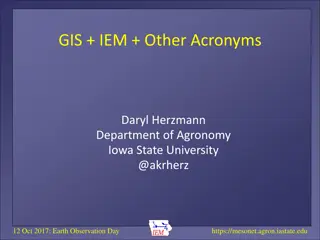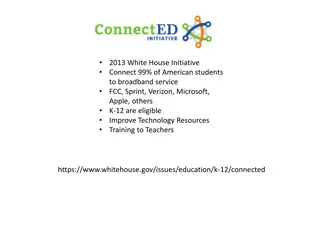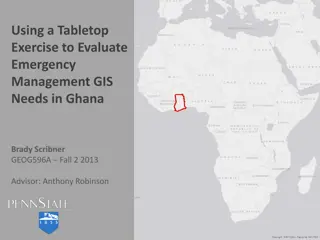Alternative Encodings for GIS Systems - Action 2017.2 Report
Define alternative encoding rules for various application schemas in mainstream GIS systems. The report outlines the process of proposing and endorsing encoding rules, with a focus on GeoJSON, GML, database formats, and linked data. It also details tasks of developing specific encoding rules and enhancing INSPIRE data models. The aim is to achieve concrete results by the end of 2018, open to observers for parallel activities.
Download Presentation

Please find below an Image/Link to download the presentation.
The content on the website is provided AS IS for your information and personal use only. It may not be sold, licensed, or shared on other websites without obtaining consent from the author.If you encounter any issues during the download, it is possible that the publisher has removed the file from their server.
You are allowed to download the files provided on this website for personal or commercial use, subject to the condition that they are used lawfully. All files are the property of their respective owners.
The content on the website is provided AS IS for your information and personal use only. It may not be sold, licensed, or shared on other websites without obtaining consent from the author.
E N D
Presentation Transcript
Action 2017.2: Alternative Encodings 2017.2 sub-group kick-off meeting 4 July 2018 Joint Research Centre The European Commission s science and knowledge service
Action 2017.2 Context Aims: Define alternative encoding rules (mainly for the purpose of viewing/analysis in mainstream GIS systems) for a number of selected application schemas and a template and procedure for proposing and endorsing additional encoding rules in the future. Proposals for alternative encodings rules were collected through an open call on the MIG collaboration platform and prioritised by MS in a survey Most support for GeoJSON Significant support also for simplified GML, database formats (geopackage, PostGIS, ESRI Geodatabase) and linked data Also proposals for theme-specific encodings, e.g. GeoSciML for GE and MR
Action 2017.2 Sub-group Tasks developing an encoding rule for GeoJSON (as a first example) GP* document developing generic rules / approaches for flattening the INSPIRE data models (which will be useful for a number of alternative encodings) GP document developing the overall procedure for proposing and endorsing additional encodings Aim to achieve concrete results within the remaining mandate of the action (until the end of 2018) Open to observers, who may want to develop alternative encoding rules in parallel to the core activities of the action Such parallel activities would however not be part of the "official" action deliverables * INSPIRE Good Practice
Encoding rule Possible structure 9.1. General 9.2. Application schema package 9.3. Types 9.3.1. Mappings 9.3.2. Alignments 9.3.3. Class name 9.3.4. Abstractness 9.3.5. Inheritance 9.3.6. Spatial object type 9.3.7. Data type 9.3.8. Union 9.3.9. Enumeration 9.3.10. Code list 9.4. Properties 9.4.x Multiplicity 9.4.y Voidability 9.5. Association class 9.6. Constraints 1. 2. 3. 4. 5. 6. 7. 8. 9. 10. Instance conversion rules Annexes: Examples, Scope Conformance Normative references Terms and abbreviations Overview General encoding requirements Input data structure Output data structure Schema conversion rules
Rules for flattening Rule Name Description Purpose Restrictions / loss of information Source Proposed combinations of rules (for given themes?)
Proposal for additional encodings INSPIRE Good Practices Formal (but slow) processes for updating IRs and TGs Ongoing discussions / existing examples (in MS, projects or by solution providers) of good practices for specific implementation issues (e.g. how to create persistent identifiers) opportunities offered by emerging technologies and standards (e.g. Vector Tiles, OGC SensorThings API) or extensions/profiles for specific application domains Have a formal process for proposing such good practices for MS/EC consideration Widely adopted good practices could also lead to the development of new or extension of existing TGs
INSPIRE Good Practices Procedure 1.Initiation using a "good practice fiche" including evidence that the solution has been put into practice and has received broader support 2.Outreach through a webinar 3.Submission for inclusion in a good practices section in the INSPIRE Knowledge Base (ideally with support from one or several INSPIRE MS representatives) 4.Opinion of the MIG to endorse, ask for clarification or reject the good practice 5.Feedback from users through the good practice repository
Good practice fiche (= metadata) Name Description INSPIRE component(s) References Normative reference Other references Relevance & expected benefits Intended Outcome Evidence of implementation & support (to be documented using the INSPIRE in Practice platform) Limitations
(Rough) work plan Aug-Sep: Collect and analyse examples / existing implementations extract proposals and open questions GeoJSON Flattening approaches Sep-Dec: Draft encoding rules (focus on sections 9+10) Draft flattening GP (focus on flattening approaches used in examples and/or relevant for GeoJSON encoding rule) Nov: Face-to-face meeting to discuss open issues
Tools Wiki on the (new) MIG collaboration platform for meeting minutes, sharing documents, general discussions and actions Do we need also an issue tracker? Tools for drafting documents? (Github? Word? ) Mailing list inspire-2017-2@jrc.ec.europa.eu for e-mail communication with the sub-group WebEx for regular web-conferences
Any questions? You can find me at @michellutz & michael.lutz@ec.europa.eu
